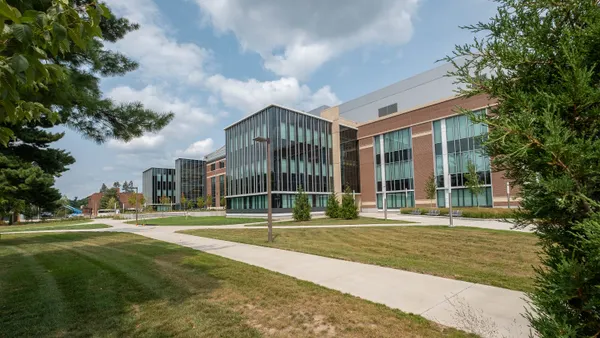Dive Brief:
- Calling it the Would Wood project, Swedish government agency Vinnova is assembling a group of businesses, colleges, students, designers and architects to research and create large-scale 3-D-printed wood-based structures and objects, 3DPrint.com reported.
- With furnishings and small-scale structural elements as the immediate goal, group members want to scale up their projects so that they will be able to contribute to sustainable and eco-friendly cities through large structures and construction projects.
- The Would Wood team members told 3DPrint.com that new 3-D materials must be developed in conjunction with new technologies — not from existing materials used in old processes. To meet this goal, the group will use robotics and additive manufacturing processes to develop sustainable, locally produced wood-based composites suitable for 3-D printing.
Dive Insight:
Leading the project is Mikael Lindström of Innventia, a Swedish research institute that is developing technology for the sustainable use of raw forest materials.
"We believe that this technology will change the way we look at all aspects of sustainability, including quality of life, environment, logistics, materials strategies, energy and transportation," Lindström told 3Dprint.com.
The Would Wood project promotes an interdisciplinary approach to developing a natural 3-D printing process, combining architecture, design, robotics, mechatronics and materials engineering.
This is a departure from the standard 3-D printing story prominent in the industry. Recently, most 3-D printing innovations have involved concrete or clay-based materials with an emphasis on low-cost or emergency housing, like the mammoth WASP Big Delta or the smaller, portable Apis Cor. Famed Austrian architect Wolf D. Prix also made headlines as well by stating that 3-D printing and robotics are the future of the construction industry.
And, of course, wood is a big story in the industry, with more tall buildings incorporating the material as a more sustainable option than concrete and steel.
"Our vision is to radically change the way we produce everything from furniture, accessories and structural elements to entire buildings. In that way, we lay the groundwork for a new chain of products and services based on 3-D-printed wood," Lindström said.











